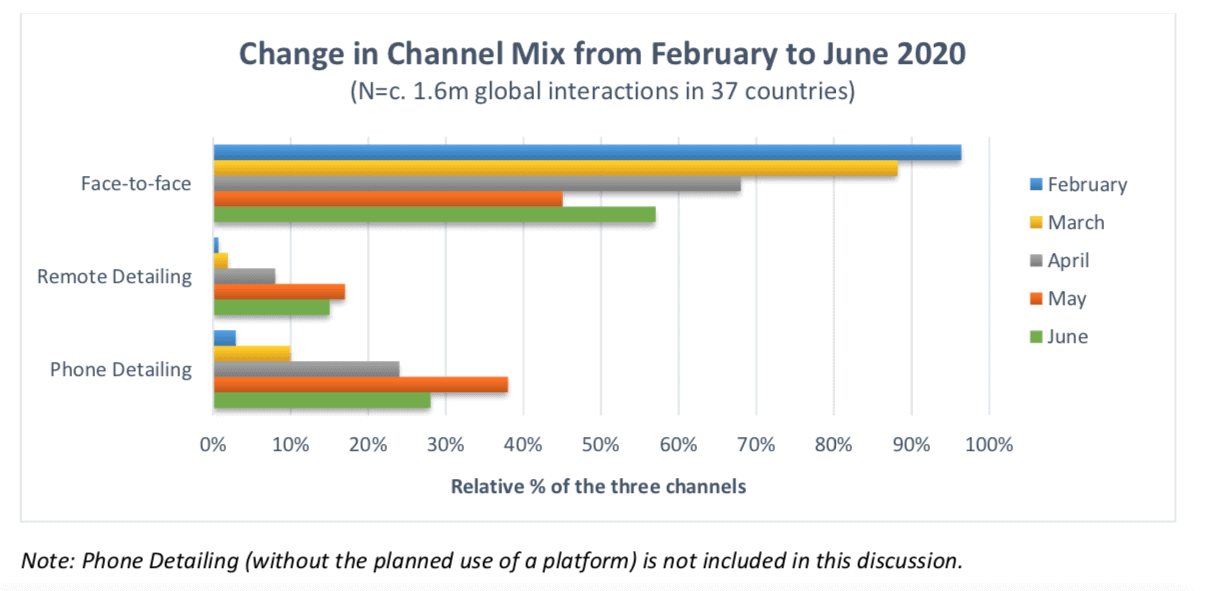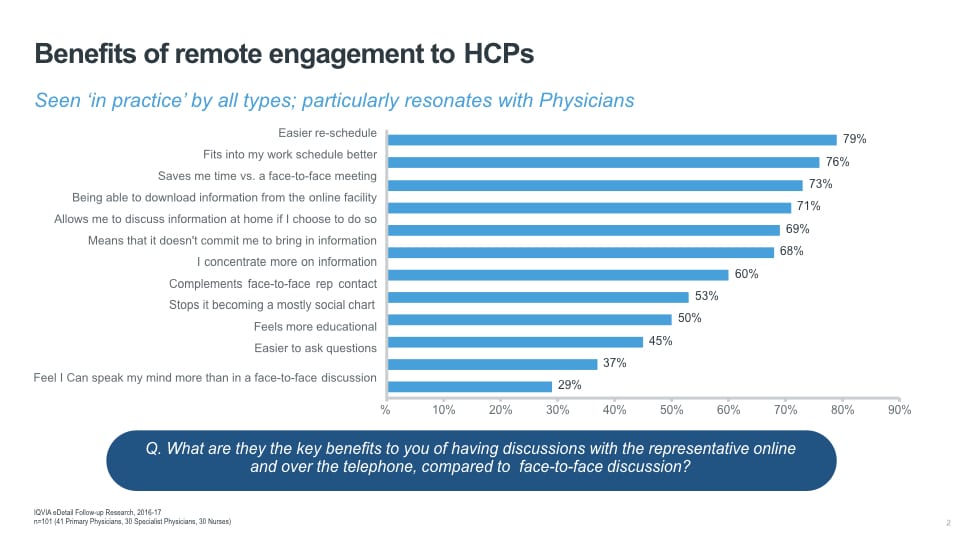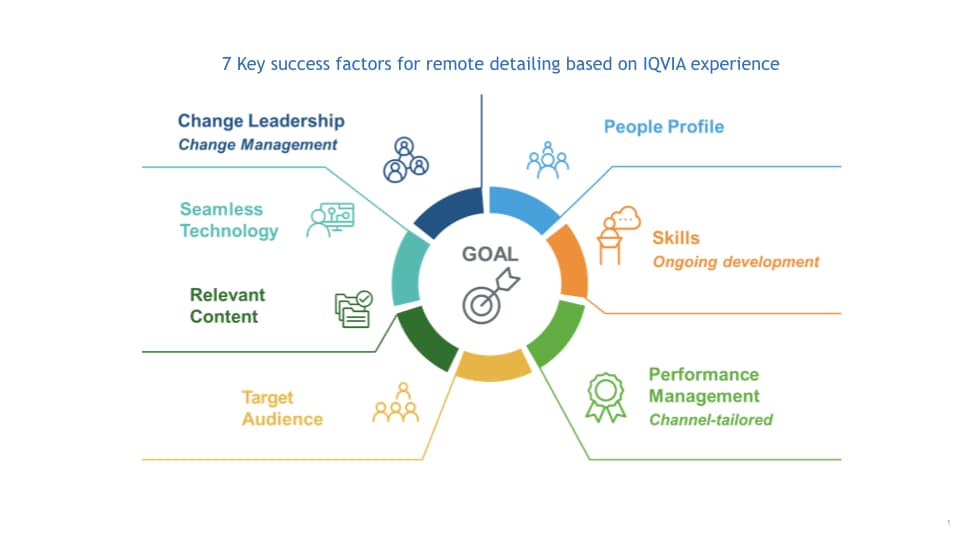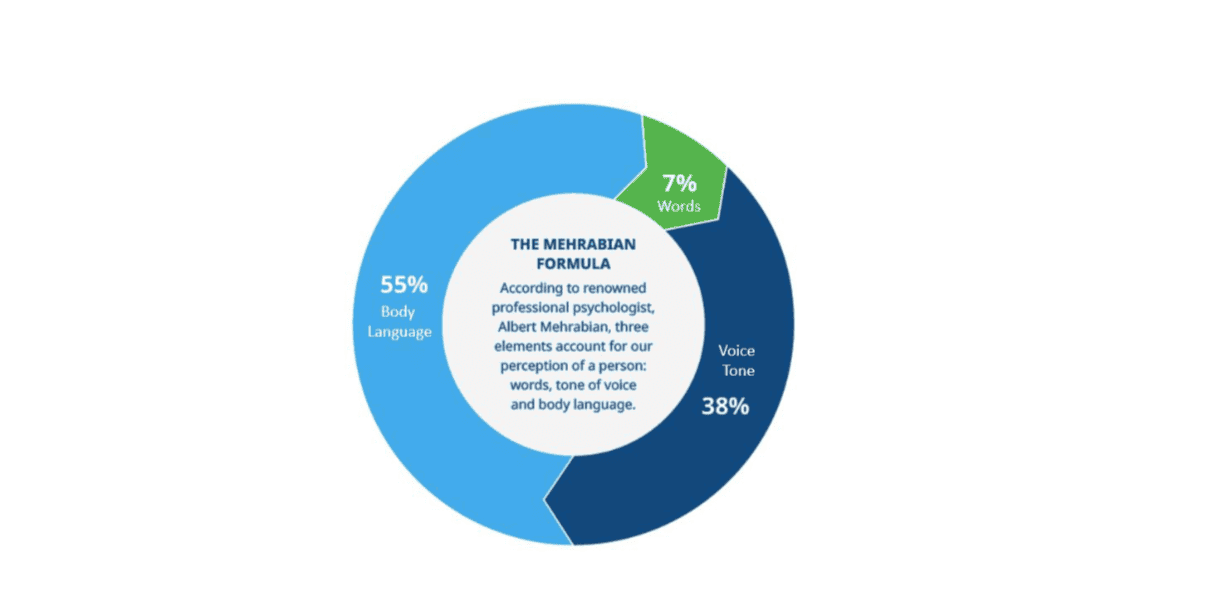

In 2019, IQVIA was able to draw on over 20 years’ experience to produce a Whitepaper on remote engagement (The Power of Remote Personal Interactions: Could life sciences companies be doing better?) and ran supporting Webinars (available on demand).
Both the Whitepaper and Webinars defined remote interactions as calls in which a company representative shares content with a healthcare professional (HCP) in real time using an online meeting environment. They went on to make the case for life sciences companies to consider greater use of remote interactions as an impactful way to engage with healthcare professionals (HCPs).
Fast forward to Spring 2020 – how much has changed! The COVID-19 pandemic has significantly impacted life sciences companies’ usual way of engaging with HCPs and use of remote interactions has increased as a result.
This article provides an update on how the COVID-19 pandemic has changed the use of remote engagement and possible implications for the ‘new normal’.
Note that:
- for the purpose of this article, remote interaction or engagement refers to company representatives conducting an HCP call, sharing content via an online meeting environment; for sales purposes, this approach is also known as remote or live detailing.
- phone engagement (without the planned use of a platform) is also an important remote, person-based interaction that has seen an increase due to COVID-19. It was a more accepted channel in many countries pre-COVID-19, used particularly for short, simple messages. It will not be discussed in detail in this article, although comparative channel data is shown for completeness.
Remote engagement pre-pandemic
Prior to the COVID-19 pandemic, the remote engagement channel was not widely adopted by the life sciences industry. In an IQVIA survey conducted in October 2019, 65% of companies were either planning to start or piloting remote engagement, with only 17% considering it an established channel within their organisations.

Furthermore, of companies using or piloting remote interactions, more than 50% thought there was room for improvement or a need to do more, and only 5% thought they had it right.
Despite its relatively low use before the pandemic, remote engagement already represented an impactful way of engaging with HCPs, frequently among the top three most impactful interactions (with others being face-to-face and webinars).
Enhanced use of remote engagement during the pandemic
In countries affected by COVID-19:
- health facilities restricted access to all non-essential personnel
- HCPs rightly prioritised managing COVID-19 patients
- field team activities were limited or suspended in response, with the added desire to protect employees.
The COVID-19 pandemic has led to a significant reduction in face-to-face interactions, with other channels, including remote engagement, increasing. Analysis of IQVIA Channel Dynamics data shows the extent to which face-to-face interactions reduced and remote interactions increased from February to June 2020 across 37 markets (including the USA).

The timing and mix of this change varied by country, depending on:
- when/the extent to which countries were most significantly impacted by COVID-19
- the mix of channels used for commercial purposes in countries prior to the pandemic.
Remote channels have helped support appropriate commercial activity and remote engagement has increased significantly in most countries, albeit from low pre-COVID-19 baselines. Nevertheless, in some countries, it has become the third most used channel after email and phone engagement (eg, Spain, Brazil and the USA).
In line with these observations, globally, we have seen significant increase in active users and remote interactions using IQVIA Remote Detailing platforms. At end of June 2020, compared to December 2019, remote interactions increased by 1,800% (one thousand eight hundred) and active users >1,000% (one thousand).
Pre-COVID-19, the pace of adoption of non-face-to-face and digital channels by life sciences companies was relatively slow compared to other industry sectors, and the pandemic has rapidly accelerated the adoption of alternative channels and their management.
Why does remote engagement work? Because it’s highly valued by HCPs
Life sciences companies strive to support and add value to HCPs and the care of their patients. When delivered well, feedback suggests remote engagement adds significant value to HCPs driven by the focus on on-screen content and the longer duration compared to phone only and face-to-face calls. In fact, IQVIA experience shows the average duration of remote engagement calls at almost 80% longer versus phone only calls.
IQVIA Channel Dynamics data captures a Net Promoter Score4, showing HCPs perception of channels (Promoter/Passive/Detractor). From the onset of the COVID-19 pandemic, the relative proportion of Promoters and Detractors for remote engagement is better than both phone only and face-to-face (Passives are similar for all three).
This value is further endorsed by feedback from IQVIA projects managed and delivered by IQVIA representatives working on behalf of clients. These face-to-face representatives were required to adopt remote engagement due to the pandemic and, via standard post-call surveys, we have seen HCP satisfaction levels in line or higher compared to pre-pandemic levels. All elements of remote interactions are highly valued by HCPs, with >90% being satisfied or extremely satisfied.

Furthermore, based on the first-hand experience of IQVIA Project Managers in countries impacted by COVID-19 lockdown restrictions, we have noted the following being of value for HCPs:
- Flexibility has been highly relevant during lockdown, with many HCPs preferring to be contacted during their lunch breaks or while they were at home, outside working hours. This is in line with results from pre-COVID-19 market research where 70% of HCPs said that“allowing them to discuss information at home, if they chose to do so”, was a key benefit of remote engagement.
- Ability to download relevant product information and patient support material from online platforms has proven to be highly supportive, due to the impossibility of distributing these materials in printed version. This is also in line with previous findings.
Both the above were also evident in the Benefits of Remote Engagement to HCPs, captured in IQVIA’s previous market research (see below).


IQVIA has identified seven key success factors for effective remote engagement described in our Whitepaper and Webinars referred to in the introduction.
Life sciences companies have faced challenges in rapidly adopting remote engagement in response to the COVID-19 pandemic. Primary among these has been lack of time and previous experience to ensure all key success factors are effectively addressed.
In general, the main action taken has been to train and coach existing sales field teams to effectively engage remotely.
Particular short-term or transitionary considerations include:
Skills – remote communication skills requirements are different to those for face-to-face engagement. The absence of body language increases the relevance of voice tone and word choice. Individuals with the right listening and communication abilities need to be selected and trained, with significant ongoing training and coaching.

Performance management – appropriate performance measures need to be selected and managed, along with remote-engagement tailored goals and incentives.
Technology – the choice of technology for remote engagement is important, to ensure that compliance standards are achieved and an easy, seamless experience is provided for HCPs and company representatives. Many technologies are available and advice from relevant experts can help decide on the best solution.
Content – online meeting environments require tailored content, particularly as HCPs will focus more on what they see on screen than they may do with a physical sales aid in face- to-face calls. Additionally, the online environment provides the opportunity to makes HCPs aware of or download additional information (eg, diagnosis and treatment tools, patient information leaflets, links).
The ‘new normal’: implications post-pandemic
The COVID-19 crisis has forced life sciences companies to review engagement models and explore more fluid, easier to adapt approaches; this includes considering the proficiency of non-face-to-face person-based channels.
Although some level of face-to-face interaction is returning, this interaction:
- is likely to come with additional requirements for company representatives for COVID-19 testing and use of PPE
- may be more appointment driven with ‘drop-in’ calls being less common
- may increase and decrease for the foreseeable future with subsequent waves of coronavirus.
So, many commentators envisage that it may be some time before things ‘return to normal’ and indeed, things may not revert to pre-pandemic levels. So, remote engagement will increasingly prove to be a highly viable option.
In the ‘new normal’, we anticipate that face-to-face and remote engagement by sales representatives will continue to represent the cornerstone of interactions with HCPs, while at the same time play a pivotal role in supporting the expansion of digital channels.
The power of remote personal interactions continues–what will it look like in a year’s time? We shall see…
Note: Data cited in this article is drawn from IQVIA’s proprietary data assets and previous thought leadership publications
Karen Ticozzi, Contract Sales & Medical Solutions (Global Business Unit), IQVIA
Liz Murray, Contract Sales & Medical Solutions (Global Business Unit), IQVIA





